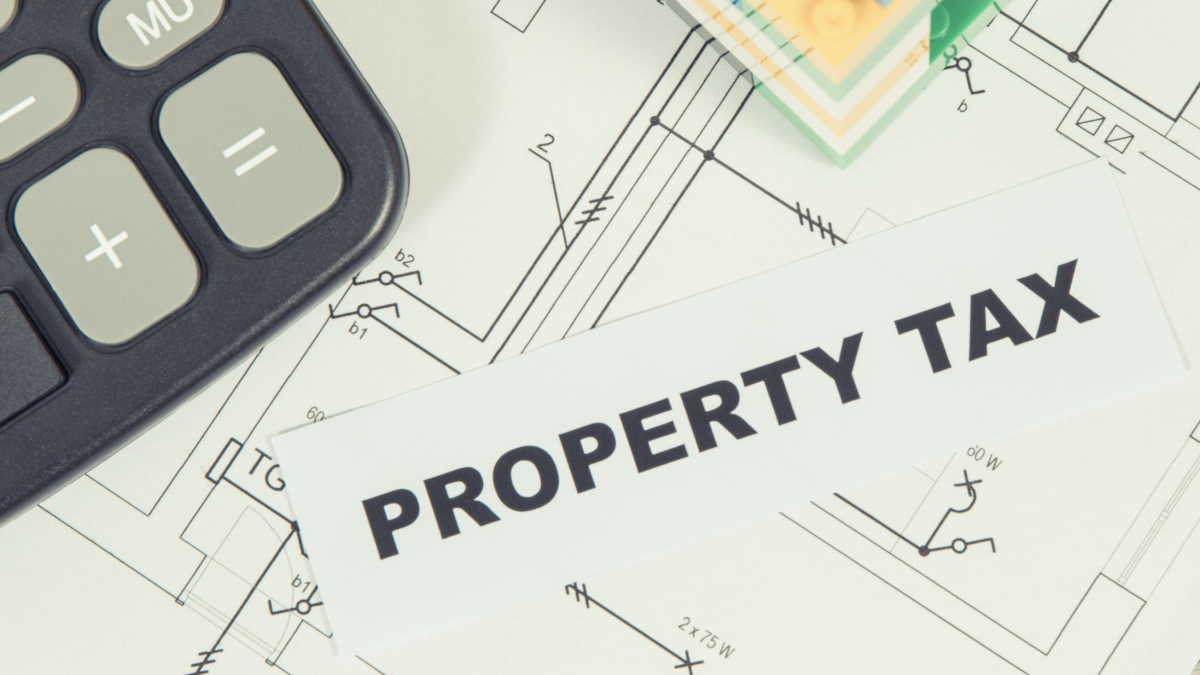
Property taxes are a major expense for homeowners, business owners, and real estate investors, often based on the assessed value of your property as determined by your county appraisal district. If this value is too high—due to errors, outdated data, or market misjudgments—you could be overpaying significantly. Filing a property tax protest allows you to challenge an unfair assessment, but success hinges on presenting strong, persuasive evidence. Whether you’re preparing for an informal review or a formal Appraisal Review Board (ARB) hearing, gathering the right evidence is critical. This comprehensive guide provides actionable tips and tricks for collecting compelling evidence to support your property tax protest, helping you build a robust case and potentially save hundreds or thousands on your tax bill.
Why Evidence Is Crucial for Your Protest
A property tax protest is your opportunity to prove that your property’s assessed value is too high, either because it exceeds the fair market value or is unequal compared to similar properties. The appraisal district relies on evidence to justify their valuation, and you must counter with equally or more convincing data. Strong evidence can lead to a significant reduction in your assessed value. For example, lowering a $450,000 assessment by $50,000 at a 2.5% tax rate saves $1,250 annually. Weak or incomplete evidence, however, can undermine your case, leaving you with an inflated tax bill. This guide outlines the types of evidence to gather and practical strategies to make your protest successful.
Types of Evidence for a Property Tax Protest
To build a compelling case, focus on these key categories of evidence, each addressing different aspects of your property’s valuation:
1. Comparable Sales (Comps)
- What It Is: Recent sales of properties similar to yours in size, age, location, and condition, sold for less than your assessed value.
- Why It Matters: Comps are the backbone of a market value argument, showing what buyers are willing to pay for properties like yours.
- Tips and Tricks:
- Choose Recent Sales: Select sales from the last 6–12 months, as older data is less persuasive.
- Match Key Features: Look for properties within a half-mile (or similar neighborhood), with similar square footage, bedrooms, bathrooms, and construction year.
- Adjust for Differences: If a comp has upgrades (e.g., a renovated kitchen), note how your property differs to justify a lower value.
- Use Reliable Sources: Access MLS data through a realtor, county sales records, or professional appraisal services rather than public sites like Zillow, which may have inaccuracies.
- Aim for 3–5 Comps: More than five can overwhelm the ARB, while fewer may seem insufficient.
- Example: If your home is assessed at $400,000, find three homes sold for $360,000–$370,000 with similar specs to argue for a $365,000 value.
2. Property Condition Issues
- What It Is: Documentation of physical problems that reduce your property’s value, such as structural damage, outdated systems, or deferred maintenance.
- Why It Matters: Issues like a leaky roof or cracked foundation lower your property’s market value compared to well-maintained comps.
- Tips and Tricks:
- Take Clear Photos: Capture high-quality images of issues like water damage, broken fixtures, or outdated wiring. Include multiple angles and close-ups.
- Obtain Repair Estimates: Get written quotes from licensed contractors to quantify the cost of fixing issues (e.g., $15,000 for a new HVAC system).
- Highlight Major Issues: Focus on high-impact problems (e.g., foundation cracks over cosmetic wear like faded paint).
- Compare to Comps: Explain how your property’s condition is worse than the comps you selected, justifying a lower value.
- Document Recent Damage: If a storm or flood affected your property after the appraisal date (typically January 1), include evidence like insurance claims.
- Example: Photos of a cracked foundation with a $20,000 repair estimate can support a $20,000–$30,000 value reduction.
3. Appraisal Errors
- What It Is: Mistakes in the appraisal district’s records, such as incorrect square footage, wrong number of bedrooms, or misclassified property type.
- Why It Matters: Errors can artificially inflate your assessed value, and correcting them is often straightforward.
- Tips and Tricks:
- Review Your Property Record: Check your appraisal notice or the district’s online portal for details like lot size, building size, or features.
- Compare to Reality: Measure your property or review blueprints to confirm accuracy. For example, if the district lists 2,500 square feet but your home is 2,300, document the discrepancy.
- Gather Proof: Use deeds, surveys, or builder plans to show the correct data.
- Focus on Impactful Errors: Errors that significantly affect value (e.g., an extra bedroom) are more likely to lead to reductions.
- Example: Correcting a 200-square-foot overstatement at $150 per square foot could reduce your value by $30,000.
4. Unequal Appraisal Data
- What It Is: Evidence that your property is assessed higher than similar properties in your neighborhood, violating the “equal and uniform” principle.
- Why It Matters: Many states allow protests based on unequal appraisal, even if your market value is accurate, as it ensures fairness.
- Tips and Tricks:
- Identify Similar Properties: Find 5–10 properties in your neighborhood with similar characteristics (e.g., size, age, type).
- Compare Assessments: Use the appraisal district’s online database to check their assessed values. Look for lower valuations than yours.
- Adjust for Differences: Account for minor variations (e.g., a slightly larger lot) to strengthen your comparison.
- Present Clearly: Create a table showing your property’s assessment vs. others to highlight disparities.
- Example: If your home is assessed at $420,000 but five similar homes are at $380,000–$390,000, argue for a $390,000 value based on uniformity.
5. Market Conditions
- What It Is: Data showing broader market trends that affect your property’s value, such as declining sales prices or an oversupply of homes.
- Why It Matters: Appraisal districts may not fully account for recent market shifts, especially in a cooling market.
- Tips and Tricks:
- Research Local Trends: Use real estate reports, news articles, or realtor insights to show declining prices or slow sales in your area.
- Highlight Oversupply: Note if many similar properties are for sale, reducing demand and value.
- Use Data Sparingly: Market trends are secondary to comps but can support your case in a weak market.
- Example: A report showing a 5% drop in local home prices since last year can justify a lower assessment.
6. Independent Appraisals
- What It Is: A professional appraisal of your property’s market value, conducted by a licensed appraiser.
- Why It Matters: An independent appraisal provides an expert opinion that can carry significant weight with the ARB.
- Tips and Tricks:
- Hire a Qualified Appraiser: Choose one with local experience and credentials (e.g., MAI designation).
- Request a Specific Date: Ensure the appraisal reflects the valuation date (often January 1) used by the district.
- Weigh Costs: Appraisals cost $300–$600, so use them for high-value properties or complex cases where savings justify the expense.
- Example: An appraisal valuing your $500,000-assessed home at $460,000 can be a powerful argument for a $40,000 reduction.
Step-by-Step Guide to Gathering Evidence
Follow these steps to collect and organize your evidence effectively:
1. Review Your Appraisal Notice
- Check the assessed value, property details, and protest deadline (typically 30–45 days from receipt or May 15).
- Identify errors or missing exemptions (e.g., homestead, senior, veteran).
- Compare the value to recent sales in your area using public tools like Zillow or Redfin as a starting point.
Tip: Save a copy of the notice and note any discrepancies for your protest.
2. Access Public Records
- Visit your appraisal district’s website to view your property’s record and assessments of similar properties.
- Use county recorder or tax assessor sites for sales data or deeds.
- Request detailed appraisal data (e.g., comps used by the district) if available.
Tip: Some districts charge for records, so prioritize free online databases first.
3. Collect Comparable Sales
- Work with a realtor for MLS access or use county sales records.
- Narrow down 3–5 comps within a half-mile, sold recently, and closely matching your property.
- Create a table comparing your assessed value to comps’ sale prices, adjusting for differences.
Tip: Include a map showing comps’ locations to emphasize proximity.
4. Document Property Issues
- Inspect your property for value-reducing problems (e.g., outdated fixtures, damage).
- Take clear, timestamped photos and label them (e.g., “Living room water damage, June 2025”).
- Get 1–2 contractor estimates for major repairs, ensuring they’re on official letterhead.
Tip: Focus on issues visible to buyers, as these impact market value most.
5. Check for Unequal Appraisal
- Search your district’s database for similar properties’ assessments.
- Select properties with lower values and document their details (e.g., square footage, year built).
- Prepare a table or chart to present disparities clearly.
Tip: Ensure your comparisons are from the same tax year as your assessment.
6. Research Market Trends
- Look for local real estate reports or news articles on market conditions.
- Note specific trends (e.g., “10% increase in homes for sale in Q1 2025”) to contextualize your comps.
- Use this as supplementary evidence, not your primary argument.
Tip: Realtor blogs or local housing market updates are good sources.
7. Organize Your Evidence
- Compile evidence in a binder or digital folder with sections for comps, condition, errors, etc.
- Include a one-page summary sheet outlining your requested value and key points.
- Use visual aids like tables, charts, or maps to make data clear and persuasive.
Tip: Bring extra copies of your evidence packet for the ARB and appraiser.
8. Consider Professional Help
- Hire a property tax consultant for access to premium data (e.g., MLS, CoStar) and expert analysis.
- Consultants often work on contingency (e.g., 30–50% of savings), reducing your risk.
- Use an independent appraiser for high-stakes cases, ensuring their report is tailored to the district’s valuation date.
Tip: Choose professionals with local experience and positive reviews.
Common Mistakes to Avoid
- Using Weak Comps: Avoid comps that are too old, too far away, or dissimilar (e.g., a mansion vs. your modest home).
- Overloading Evidence: Presenting 10+ comps or irrelevant photos can dilute your case. Stick to 3–5 strong pieces.
- Ignoring Adjustments: Failing to account for differences between your property and comps weakens your argument.
- Poor Organization: Disorganized evidence confuses the ARB. Use clear labels and summaries.
- Relying on Emotions: Focus on data, not complaints about taxes or personal hardships, which don’t sway the ARB.
Real-World Example
Consider Maria, whose home is assessed at $430,000 but she believes it’s worth $390,000. She gathers:
- Comps: Three homes sold for $385,000–$395,000, all within a quarter-mile, with similar 2,200-square-foot layouts.
- Condition: Photos of a 20-year-old HVAC system and a $10,000 replacement estimate.
- Error: The district lists her home as having four bedrooms instead of three, inflating the value.
- Unequal Appraisal: Five similar homes assessed at $380,000–$390,000.
Maria organizes her evidence in a binder with a summary requesting a $390,000 value. At the ARB hearing, her clear presentation secures a $40,000 reduction, saving $1,000 annually at a 2.5% tax rate.
Why Strong Evidence Matters
Quality evidence can make or break your protest. Well-chosen comps, documented issues, and corrected errors persuade appraisers or the ARB to lower your value, directly reducing your tax bill. Even a modest reduction can yield long-term savings, as future assessments often build on prior values. Conversely, weak evidence risks a denied protest, locking in an unfair tax bill for the year.
Taking the First Step
Start your property tax protest by reviewing your appraisal notice for errors and comparing your assessed value to recent sales. Gather comps, document condition issues, and check for unequal appraisals using public records or professional help. Organize your evidence clearly and file your protest by the deadline (typically May 15 or 30–45 days from the notice). For complex cases, consider a property tax consultant to strengthen your evidence and handle the process.
For more details, visit your county appraisal district’s website or contact their office for protest forms, deadlines, and resources. Taking these steps now can save you money and ensure a fairer tax bill.
Disclaimer: Property tax laws and procedures vary by state and county. Always verify local rules with your appraisal district or a qualified professional. This guide is for informational purposes and does not constitute legal advice.
You Might Also Like

May 1, 2025

April 28, 2025
Popular Categories
Popular News

Property Tax Tips
How to Choose the Right Property Tax Consultant May 1, 2025
Collin County News
April 2025 McKinney Government Roundup: Major Developments and Initiatives May 1, 2025
Collin County News
Heritage McKinney Square Opens, Offering Modern Living in East McKinney May 1, 2025
Flower Mound - Highland Village - Argyle
Argyle ISD Advances Construction on New Stadium and Middle School Facilities April 30, 2025
Flower Mound - Highland Village - Argyle
Flower Mound Commission Endorses New Parking Ratio to Attract H-E-B to Furst Ranch April 30, 2025
Flower Mound - Highland Village - Argyle
Flower Mound Wins Prestigious Governor’s Community Achievement Award April 29, 2025
Frisco
Traffic Alert: Roadwork Projects to Cause Delays in Frisco This Week April 29, 2025
Property Tax Tips
What Happens at a Property Tax Appraisal Hearing? April 28, 2025






